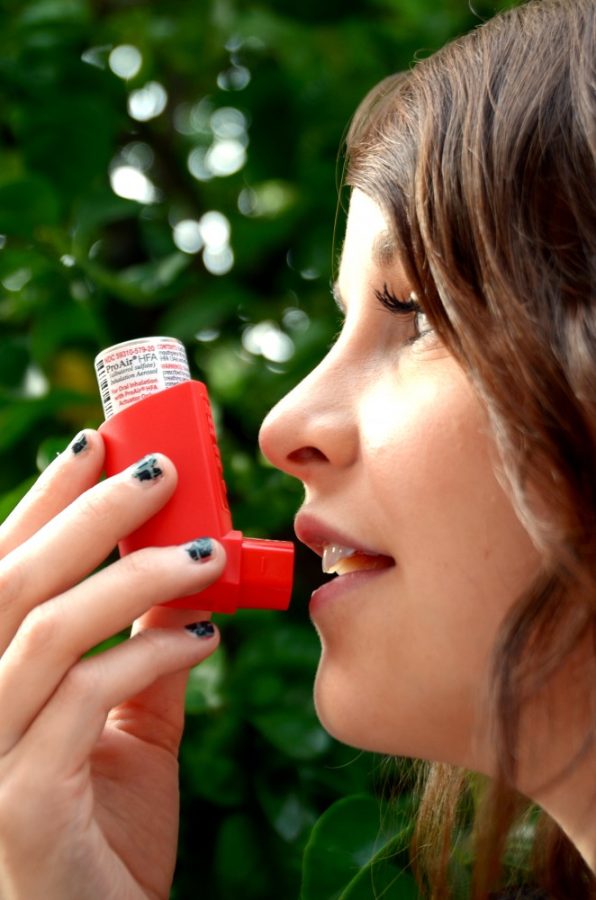The phase out of over-the-counter fast-acting asthma inhalers might leave some UA students breathless.
The U.S. Food and Drug Administration announced on Sept. 22 that inhalers found containing chlorofluorocarbons would no longer be available for patients due to their harmful effects on the environment. People who use these types of inhalers will be asked to switch to a prescription-only alternative and will have until Dec. 31 to do so.
“We see this change as a positive thing because using those over-the-counter inhalers has delayed people getting the appropriate care,” said Mark Brown, a pediatric pulmonologist for the University of Arizona Medical Center-University Campus.
Chlorofluorocarbons, or CFCs, are commonly found in aerosol spray products and have been linked to the depletion of the ozone layer when they are sprayed and reach the atmosphere. The move to a more eco-friendly inhaler, which contains an alcohol-based propellant, an object containing pressurized gas called hydrofluoroalkane instead of CFCs is a result of the “Montreal Protocol,” an agreement signed by the U.S. and other countries to limit the use of products that can harm the ozone layer. According to Brown, the phase out the old inhalers began more than a year and a half ago when the old inhalers were removed from prescription counters.
Brown said there is no difference between the two inhalers and that the alcohol propellant actually works better than the CFC inhalers.
“One of the side benefits of making the pharmaceutical companies change the propellant is that the inhalers are more effective in delivering the drug to the lungs than the old CFCs,” said Brown. “So it is better for the environment and the more effective for person using the inhaler.”
The only remaining over-the-counter fast-acting inhaler found in the U.S. that contains CFCs is the Primatene Mist inhaler.
“The concerns with fast-acting inhalers like Primatene is that they contain adrenaline and their effect doesn’t last very long so people tend to take them more frequently,” Brown said. “And they also increase the heart rate pretty dramatically and can cause pretty bad side effects.”
Environmental science junior Steven Armour said he had to use the Primatene inhaler before when he was unable to gain access to his prescription.
“During winter break a few years ago I forgot my inhaler and purchased one as a backup when I went home for Christmas,” Armour said. “Not having that as an option to buy an inhaler over-the-counter could really hurt someone in my situation. But now that I know about what is in the inhaler, I don’t think I will use it again. Protecting the environment is an important thing.”
Another concern to the switch from over-the-counter inhalers to the prescription ones is the cost. An over-the-counter fast-acting inhaler retails around $20, while their prescription counterparts can rage anywhere from $30 to $60.
Sarah Smith, a studio art sophomore, was diagnosed with asthma when she was three and has used an inhaler since. Smith thinks that peoples should consider paying the extra if it means improving a person’s health.
“If it is medication and you need it, by whatever means you should try to have it,” Smith said.









